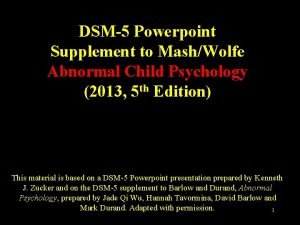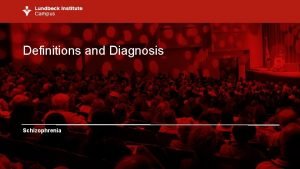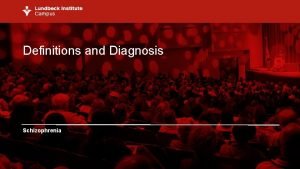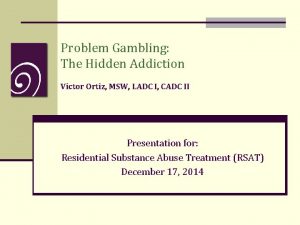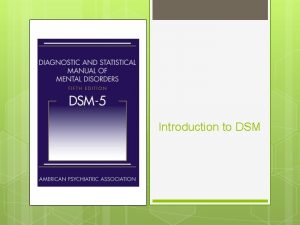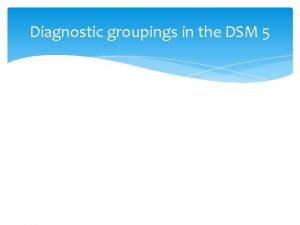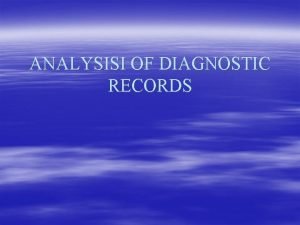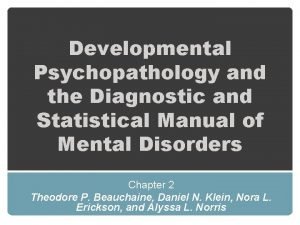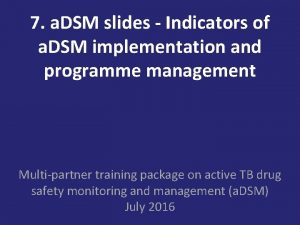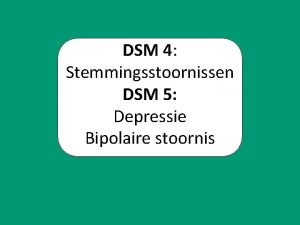THE DSM IV DSM DIAGNOSTIC AND STATISTICAL MANUAL












- Slides: 12

THE DSM IV DSM: DIAGNOSTIC AND STATISTICAL MANUAL OF MENTAL DISORDERS Unit 6

CLASSIFYING ABNORMAL BEHAVIOR: THE DSM IV • DSM: Diagnostic and Statistical Manual of Mental Disorders • Classifications based on observable signs and symptoms • Subject to ongoing revision

THE DSM IV • 5 Axes are used in diagnosis as an effort to consider patient from a variety of perspectives • Axis I: Clinical Disorders – principal disorder that needs immediate attention • Axis II: Personality Disorders and Mental Retardation factors that may shape clinical disorder • Axis III: General Medical Conditions- may be relevant to patient’s current condition • Axis IV: Psychosocial and Environmental Problems – psychosocial stresses the individual may have faced recently • Axis V: Global Assessment of Functioning – to what degree is their condition affecting their daily life



TABLE TALK • What is the DSM IV? • What are the 5 axes of the DSM IV?

SOMATOFORM DISORDERS

SOMATOFORM DISORDERS A. Somatization: expression of psychological problems through physical symptoms 1. Not intentionally faked 2. Physical symptoms are very real to sufferer 3. Primarily psychological explanation for cause

CONVERSION DISORDER 1. Show psychological stress in physical ways (e. g. blindness, paralysis, numbness, inability to speak) 2. No medical explanation 3. Symptoms usually begin after a stressful experience

HYPOCHONDRIASIS 1. Obsessive belief that one has a life-threatening disease 2. Misinterpretation of normal bodily symptoms or functions 3. Visit doctor after doctor seeking confirmation 4. Can severely affect ability to function in daily life

BODY DYSMORPHIC DISORDER 1. Obsessive preoccupation with minor or imagined flaws in appearance 2. Spend hours every day in front of mirror 3. Causes significant distress; affects ability to function in daily life

TABLE TALK • Person #1 • Describe two Somatoform Disorders. • Person #2 • Describe the other two Somatoform Disorders.
